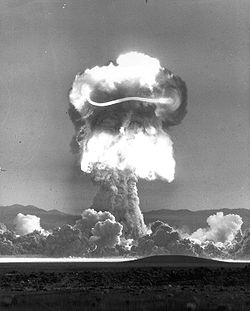Re: Travel to Stars
Posted: Sat Jul 14, 2012 9:36 pm
The "pusher plate" should provide plenty of radiation protection for the short 10 days deceleration period.BMAONE23 wrote:
A good concept for Unmanned probes. Not so good for manned exploration though, assuming that the purpose of a manned mission would be to stop somewhere, you would have to turn thr ship and blast in front of your direction of travel to slow down thereby traveling through the radiation clouds for 1/2 the trip
However the ship would have to be much much larger
(especially if it plans to stop when it got back to Earth):
400,000,000 metric ton Super Duper Orion (in orbit)
=> 40,000,000 metric ton flyby payload near α Centauri
=> 4,000,000 metric ton stopped payload at α Centauri
=> 400,000 metric ton flyby payload back near Earth
=> 40,000 metric ton stopped payload back in Earth orbit
(400,000,000 metric ton is on the order of twice the mass of the Great Wall of China)
